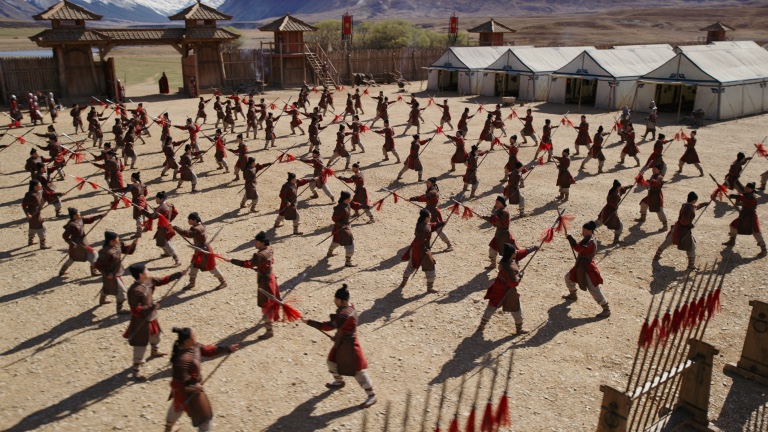![]()

The series was created as a road show with Constantine traveling to different locations around the world, solving the problems presented in each episode. This concept posed a challenge since the production shot in and around Atlanta, Georgia and the area has a distinct southern look.
Within each subsequent episode, the design team had to create locations as diverse as a Sudanese village, New Orleans and New York City. In Los Angeles, where there are different environments from desert to beach to wilderness to gritty cityscapes, re-creating Mexico would not be a problem, but even finding tile roofs in Atlanta was an impossible task.
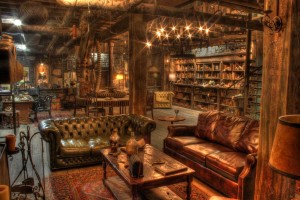
Stages were actually an empty warehouse that had to be converted. “At the same time we were building Constantine’s lair, what we called the Mill House, we were also building the stages from scratch, from sound-proofing to flooring and all that stuff,” Blass shared.
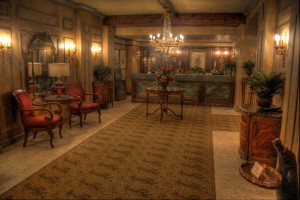 With the popularity of shows like Game of Thrones, audiences have come to expect more and television budgets have been increasing in order to satisfy those expectations. Because of the nature of television, with scripts in an ongoing state of revision by the writers in Los Angeles, Blass often created more than what was seen on camera. In the Mill House, one of the few recurring sets and Constantine’s home base, entire rooms were not shown, but the production design was intent upon creating “a big sandbox for the writers to play in.”
With the popularity of shows like Game of Thrones, audiences have come to expect more and television budgets have been increasing in order to satisfy those expectations. Because of the nature of television, with scripts in an ongoing state of revision by the writers in Los Angeles, Blass often created more than what was seen on camera. In the Mill House, one of the few recurring sets and Constantine’s home base, entire rooms were not shown, but the production design was intent upon creating “a big sandbox for the writers to play in.”
Because the locations changed for each show, Blass tried to repurpose set pieces whenever possible. The sewer system set was a reworked version of the coal mine tunnels. “They’re vastly different textures and looks, but there were elements that you could take from one to another,” said Blass. “We had the idea to then turn the sewer system into the New York City subway. That just didn’t end up happening so we ended up having to rewrite an entire script because we couldn’t do a subway in eight days.”
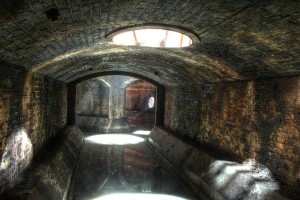 Of all the sets, the sewer system was Blass’s particular favorite. Constructed to hold 3,000 gallons of water, the set was designed in a modular way. The pieces could be moved around to reconfigure the tunnels to work in a number of different ways since the characters are supposed to be winding their way through the entire sewer system.
Of all the sets, the sewer system was Blass’s particular favorite. Constructed to hold 3,000 gallons of water, the set was designed in a modular way. The pieces could be moved around to reconfigure the tunnels to work in a number of different ways since the characters are supposed to be winding their way through the entire sewer system.
Not only did the set need to feel confined so that the characters feel trapped within it, but it also had to work for production shooting. “Walls had to be able to be removed and it had to be extremely shootable,” said Blass. “There were a lot of design challenges in that one set. The set spanned two episodes, so it became more important.”
Due to the massive scale and logistics of the production, the show had two art directors, locally-based Drew Monahan and L.A.-based Hugo Santiago, who worked in tandem with one on location and the other on stage.
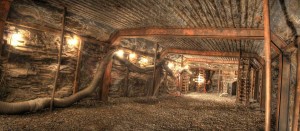 Bringing the entire world to life mandated an attention to detail. The show was filled with “Easter Eggs,” objects from the comic books such as the Twin Blade or Medusa Mask that were introduced into each episode for the fans to discover. Filling the set with these objects was the job of set decorator Natalie Pope.
Bringing the entire world to life mandated an attention to detail. The show was filled with “Easter Eggs,” objects from the comic books such as the Twin Blade or Medusa Mask that were introduced into each episode for the fans to discover. Filling the set with these objects was the job of set decorator Natalie Pope.
Again, the assignment was more difficult in Atlanta because of the limited number of prop houses. Instead of being able to go to a one-stop shop, Pope had to scour antique and thrift store and swap meets in order to decorate the massive sets within the compressed time of series production.
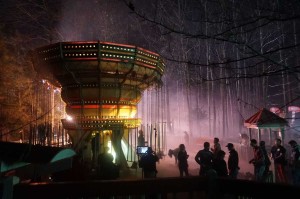 Another way the art department came up with the props was through the use of 3D printing. They worked with a Los Angeles company that specialized in Comic Con costumes to fabricate replicas of items referenced from the comic books.
Another way the art department came up with the props was through the use of 3D printing. They worked with a Los Angeles company that specialized in Comic Con costumes to fabricate replicas of items referenced from the comic books.
“To get all the gritty detail, the old maps, the antique books and all that stuff was a really amazing challenge,” stated Blass. “The sets themselves were beautiful, but really the set decoration brings in the character.”
Together, Blass and his art department, created a fantasy world that takes the viewer deep into the dark environs of Constantine.




